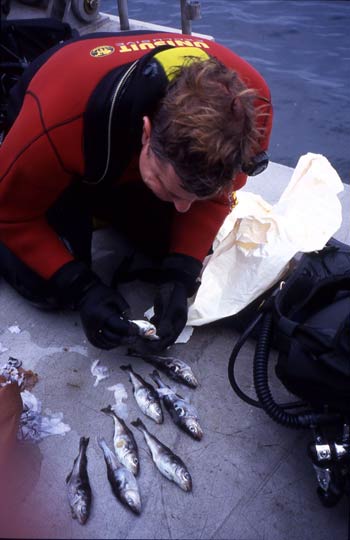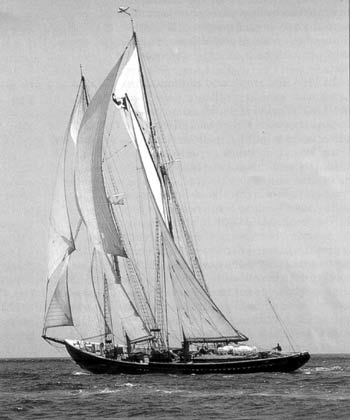Manifest Destiny
by Paul Molyneaux
|
In 1996, Jill Fallon, president of the Aquaculture Coalition, called offshore fish farming, “manifest destiny.” Speaking at the Open Ocean Aquaculture conference held in Portland, Maine that year, Fallon exhorted her colleagues: “If we [the U.S.A.] are to maintain a dominant position in the watery world, in marine biotechnology…and in sustainable environmental technology that will set the worldwide standard for open ocean aquaculture, we must open the blue frontier.” In her speech Fallon appeared to compare fishermen to Native Americans who “had to be removed, warred against, and eventually forced onto reservations to make room for new settlers…”
Fallon identified the absence of a system for leasing the open ocean as a major stumbling block for the aquaculture industry, but the Offshore Aquaculture Act, introduced by the Bush administration on June 7, 2005, may soon resolve that issue. The legislation comes on the heels of nine years of offshore aquaculture development following the Portland conference. Experimental projects supported by the National Marine Fisheries Service, the U.S. Sea Grant Program and private investors have been launched in Hawaii, Puerto Rico, the Gulf of Mexico, and elsewhere, including the Coast of New Hampshire. Since1998, Sea Grant, the University of New Hampshire, Great Bay Aquafarms, and the Portsmouth Fishermen’s Co-op have worked to grow mussels and finfish in the open ocean near the Isles of Shoal.
That project may soon be ready to go commercial, but according to Hauke Kite-Powell, a research specialist at the Woods Hole Oceanographic Institute (WHOI) in Woods Hole, Massachusetts: “Before commercial aquaculture can begin in the open ocean, government agencies are going to have to develop a straightforward system for granting tenure to a piece of watery real estate.”
continue
|

Marine Biologist, Michael Chambers, examines dead haddock from the submerged cages of an experimental offshore aquaculture project near the Isles of Shoals, New Hampshire. Photo: Paul Molyneaux |
|
|
|
|
‘Tis The Season
by Mike Crowe
|
It’s lobster boat racing season in Maine. To the uninitiated these races may seem to be something that came about with the development of the marine engine, 90 or so years ago, that is as far from fact as the difference between modern races and their antecedents. This difference is easily seen watching lobster boat races from a boat along the racecourse one day and a sail boat race the next.
The roar of engines, near collisions at speed, churned up sea, boats nearly out of the water and some observers fallen into the water, contrasts sharply with sail boats racing under the same sea conditions at five or six knots.
Lobster boats raced in the days of sail before the marine engine. Lobstermen were neither the only nor the first fishermen racing under sail.
Ground fishermen’s sailing skill came from experience. The quest for speed came from a perishable cargo, market prices and the momentum of a crew ready to return to payday. Fishermen’s lives included the often-tragic consequences of making a living in an environment that was less understood and more dangerous than space travel is today.
continue
|
 The Bluenose II a replica of the fast 1921 Canadian schooner. The Bluenose was a banker designed like the McManus boats that became the standard on the banks by the 1880’s. Safer than the clipper type schooners that preceeded them, they continued the tradition of racing to port with cargoes of fish. It was boats like these that raced in official fishermen’s races beginning in 1886. Greg Pease Photo, Baltimore , MD The Bluenose II a replica of the fast 1921 Canadian schooner. The Bluenose was a banker designed like the McManus boats that became the standard on the banks by the 1880’s. Safer than the clipper type schooners that preceeded them, they continued the tradition of racing to port with cargoes of fish. It was boats like these that raced in official fishermen’s races beginning in 1886. Greg Pease Photo, Baltimore , MD |
|
|
  
|
|

